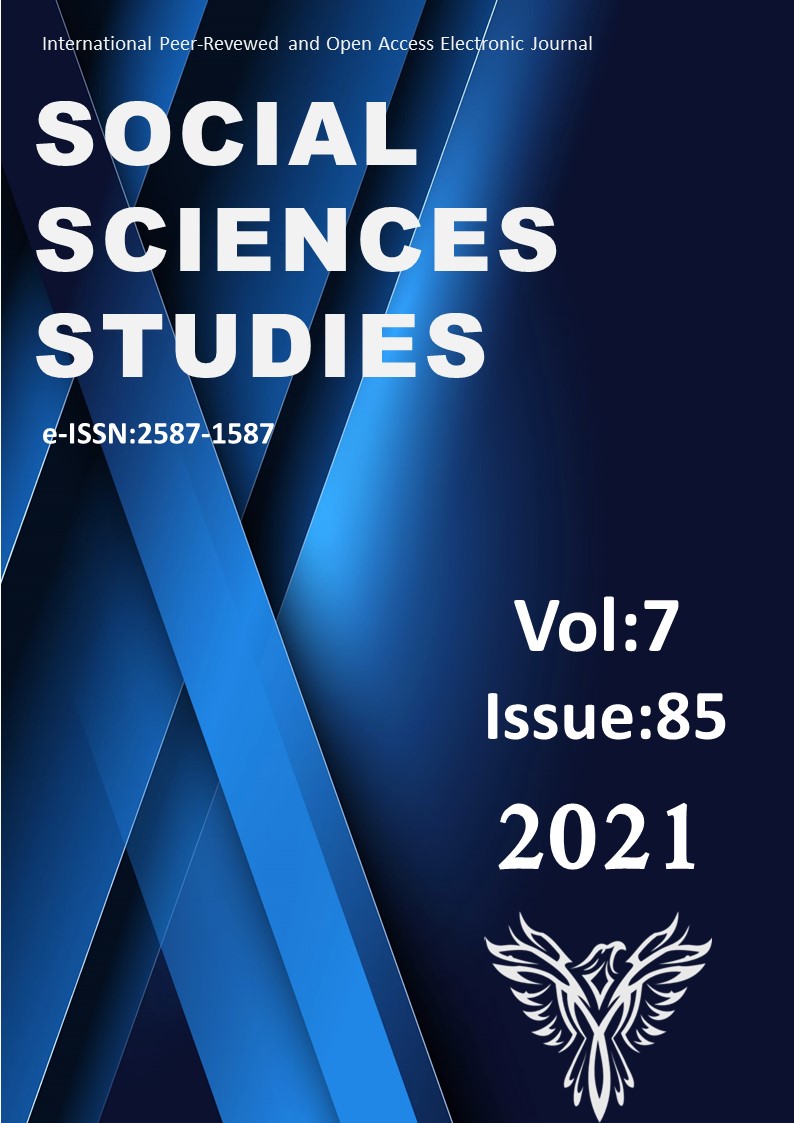Author :
Abstract
Tarihsel zaman süreci içinde ilk olarak ne zaman ortaya çıktığı bilinmemekle beraber, dilenciliğin insanoğlunun ilk devirlerinde dahi var olduğu görüşü kabul görmektedir. Neredeyse tüm toplumlarda varlık gösteren dilencilere devletlerin ve toplumların bakışı, içinde bulunulan sosyal ve ekonomik durumun etkisi ile değişiklik göstermiştir. Söz konusu bu durumun Osmanlı Devleti için de geçerli olduğu görülmektedir. Zira Osmanlı Devleti'nin altın çağını yaşadığı klasik dönemde çoğunlukla hoşgörü ile karşılanan dilenciler; klasik dönemin sonlarından itibaren dilenenlerin sayısının artmasına paralel olarak, Osmanlı yöneticilerinin başa çıkmak zorunda olduğu bir sorun haline gelmiştir. Öte yandan devletin idari, sosyal ve ekonomik olarak zayıfladığı süreçlerde bu durum içinden çıkılmaz bir hâl almıştır. Osmanlı devlet adamları her ne kadar dilenciliği bertaraf etmeye çalışmışsa da tam anlamıyla bir başarı elde edememişlerdir. 19. yüzyılın sonlarında Darülaceze'nin açılmasıyla, dilencilerin ana merkezi olan başkent İstanbul'da; İstanbullu ihtiyaç sahibi dilenciler kısmen de olsa bir çatı altında toplanmıştır. Ancak 20. yüzyılın başlarından itibaren dilencilerin sayısı İstanbul'da ivedi bir şekilde artmaya başlamıştır. Bu çalışmada da arşiv belgeleri ışığında mezkûr süreçte Osmanlı Devleti'nde dilencilik ele alınmıştır. Elde edilen verilerden Osmanlı Devleti'nin başkenti olan İstanbul'da dilencilerin sayısının yükseldiği görülmektedir. İncelenen kayıtlar, başkentte dilenen İstanbullu dilencilerin yanı sıra, taşradan insanların da dilenmek için akın akın başkente geldiğini göstermektedir. Dilencilerin, cami ve köprü gibi halkın yoğun olduğu yerlerde dilendikleri ve halkı rahatsız ettikleri anlaşılmaktadır. Bununla birlikte mercek altına alınan arşiv belgelerinden söz konusu süreçte; dilenciler için sadece mekânların değil, bazı ayların ve günlerin de oldukça önemli olduğu anlaşılmaktadır. Diğer taraftan kayıtlardan İstanbul'daki kadar yoğun olmamakla birlikte, taşrada da dilencilerin varlık gösterdikleri görülmektedir. Tüm bunlara ilaveten eldeki veriler, 20. yüzyıl başlarında Osmanlı tebaasından olmayan bazı yabancı uyruklu kimselerin de Osmanlı ülkesine gelerek dilendiğini işaret etmektedir.
Keywords
Abstract
Although it is not known when it first appeared in the historical period, the view that begging existed even in the first periods of human beings is accepted. The perspective of states and societies though the beggars exist almost all societies has changed over time with the effect of the social an economic situation. It is seen that this situation is also valid for the Ottoman Empire. In the classical period when the Ottoman Empire lived its golden age, begging was mostly tolerated; In parallel with the increase in the number of beggars since the end of the classical period, it became a problem that the Ottoman rulers had to deal with. On the other hand, this situation has become inextricable in the processes where the state was weakened in administrative, social and economic ways. Although Ottoman statesmen tried to eliminate beggary, these attempts were not fully succesful. By the opening of Darülaceze at the end of the 19th century, the capital Istanbul, the main center of beggars; needy beggars from Istanbul are gathered under one roof, albeit partially. However, since the beginning of the 20th century, the amount of beggars started to increase rapidly in Istanbul. In this study, beggary in the Ottoman Empire was discussed in the aforementioned period in the light of archive documents. From the data obtained, it is seen that the number of beggars increased in Istanbul, the capital city of the Ottoman Empire. The examined records show that in addition to the Istanbulite beggars, people from the countryside flocked to the capital to beg. It is understood that beggars beg and disturb the people in crowded places, such as mosques and bridges. However, through the archive documents taken under the scrutiny, in the process in question; it is seen that not only places but also some months and days are very important for beggars. On the other hand, it was determined that beggars were present in the provinces, although not as much as in Istanbul. In addition to all of these, the available data indicate that in the early 20th century some foreign nationals who were not Ottoman at all, came to the Ottoman Lands to beg.





